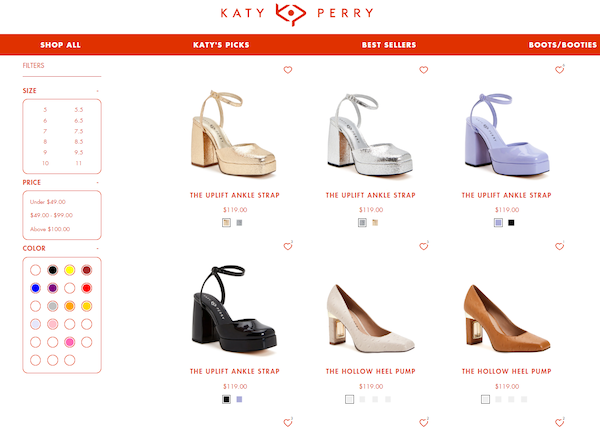What are Product Filters?
Product Filters are Shopify filters that enable more efficient and streamlined sorting, grouping, and filtering of products for specific categories. Filters can be turned on or off as desired, based on your preferences. By default, Shopify will automatically apply filters to all products in a category.
What are Product Filters used for?
Adding product filters to your eCommerce site is a great way to increase conversion rates and boost sales. Your store will benefit from creating a sense of convenience for your customers by helping them find exactly what they’re looking for, rather than browsing through hundreds of products that aren’t relevant to them. You can even add product filters to help customers find items that are on sale.
Product filters also help create a more modern and user-friendly shopping experience for your customers. This can be a great way to attract a much higher level of engagement for your customers and give them the extra motivation they need to make a purchase.
Example of Product Filters
Katy Perry Collection
The product filter of Katy Perry Collections is a great example of how product filters can be used to help customers find what they want. The store features three different types of filters and many options to sort products. This makes it very easy to find the specific type of women’s clothing that the customer is looking for.



Instantly, customers can go from hundreds of products to a more manageable number. This is especially useful when the customer knows what they’re looking for and doesn’t have time to browse through every part of the store in search of a specific item.
Best practices to optimize Product Filters
Tailor your product filtering to the needs of your customers
Keep in mind that product filters are meant to save your customers the time they would have spent searching through a chaotic selection of products. In order to provide a better filter, you need to know what type of filters your customers are looking for before creating them for them.
Creating products based on the needs of your customers is the best way to keep them interested, engaged, and more likely to purchase. This can be done easily by keeping your store catalog updated with new products that have just been released. Product filtering takes advantage of this strategy, as it allows customers to easily find exactly what they’re looking for within a manageable number of options.
Refresh the search results quickly
When applying a filter to a list of products, the results should be refreshed as soon as possible. This can be done by explicitly setting a value for the refresh attribute in the filter component. The refresh attribute determines how often the list of search results will automatically refresh when a user applies different filtering options.
Be sure that you update your filters and search results immediately after an order has been placed. This is a good way to avoid displaying stale, outdated results to your customers.
Promote Important Filters on Top of the Product List
If you’re marketing a more basic product to your users, you could place important filters on top of the list of all product options. By doing so, you can better promote filters that are more relevant for your customers and provide them with a clear understanding of the filter values they should apply.
Finding all the information needed for making a purchase within a single site is one of the most difficult tasks for many customers. Product filters make it fairly easy for customers to find exactly what they’re looking for and can be used to increase conversion rates by helping customers save time.
















